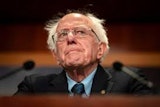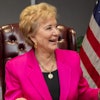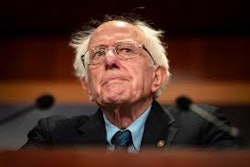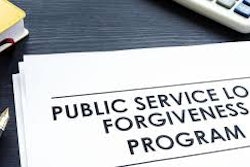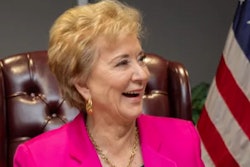HIGH POINT, N.C. – The recent announcement of $40 million in gifts to High Point University feeds into the school’s 10-year plan to raise and spend $2.1 billion and to define itself as an up-and-coming Southeastern private university.
Three High Point families and university president Nido Qubein, an entrepreneur and motivational speaker, are each giving the school $10 million, the university announced Thursday. Most of the money will go toward a new $70 million health sciences school, and the proposed pharmacy school is expected to open in 2013.
The projects are part of a dramatic expansion of the 86-year-old school, which this week won zoning approval to demolish 72-year-old Grace Evangelical Lutheran Church to make way for a new campus housing project, the High Point Enterprise reported Friday.
The university has raised $170 million since Qubein became president in 2005. During that time, the university has grown from 1,450 students to an expected 3,800 next fall, while a building boom has expanded the campus from 92 acres to 140 acres. Another 1,200 students are enrolled in its graduate school and evening degree programs.
“We’ve done it all without an official (fundraising) campaign,” Qubein told the Winston-Salem Journal. “It’s been me talking to some families about the vision of High Point University.”
The families of Earl E. Congdon, Fred E. Wilson Jr. and Mark A. Norcross were the other ones to give to the university, according to the liberal arts school’s website. High Point is located off Interstate 85 just south of Greensboro.
Campus officials expect enrollment to continue growing, to 5,000 undergraduates by 2017.
The university has a $2.1 billion expansion target and already has committed $550 million to construct 28 new buildings, add 120 faculty members and buy the nearby Oak Hollow Mall for $9 million.
The mall purchase gives the university room for future expansion, vice president and chief of staff Chris Dudley said. Meanwhile, the mall’s previous owners are managing the property while school leaders evaluate their options, he said.
“We have a sheet of 300 ideas,” Dudley said. “It is a matter of timing and what is possible there.”
The university has completed construction of eight new buildings and two stadiums and renovated 16 buildings and is working on a parking deck, new restaurants, a tennis complex and four new residence halls. Plans also include a $60 million, 5,500-seat basketball arena.
Attending the university costs $35,400 this year, which covers tuition, fees, room and board, parking, laundry and athletic events. Classes typically have 17 students and a ratio of 14 students to each faculty member.
The students, and their parents, have proved to be a new source of revenue. Parents with students enrolled in the school donated $14,000 in 2005, Qubein said. This year’s parents have given $2.8 million, he said.
“Philanthropists like to see a clear vision, and they like to see the vision framed by solid leadership, and they like to see focused execution,” Qubein said. “We have that in ample supply.”
